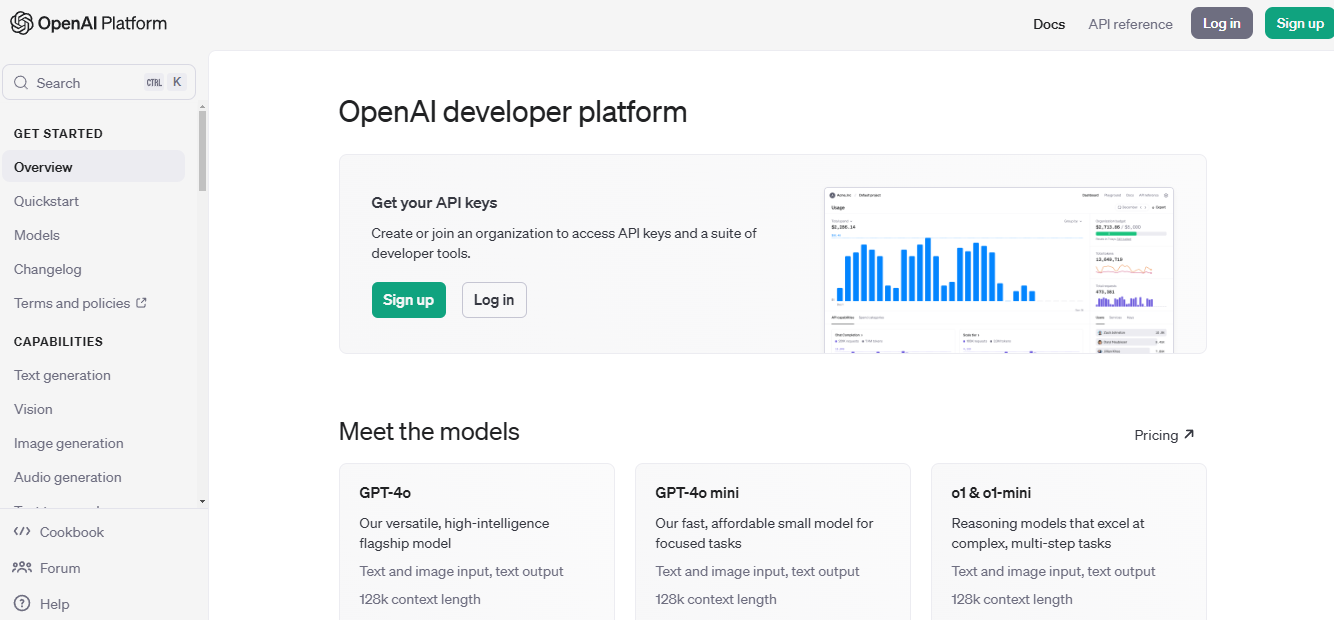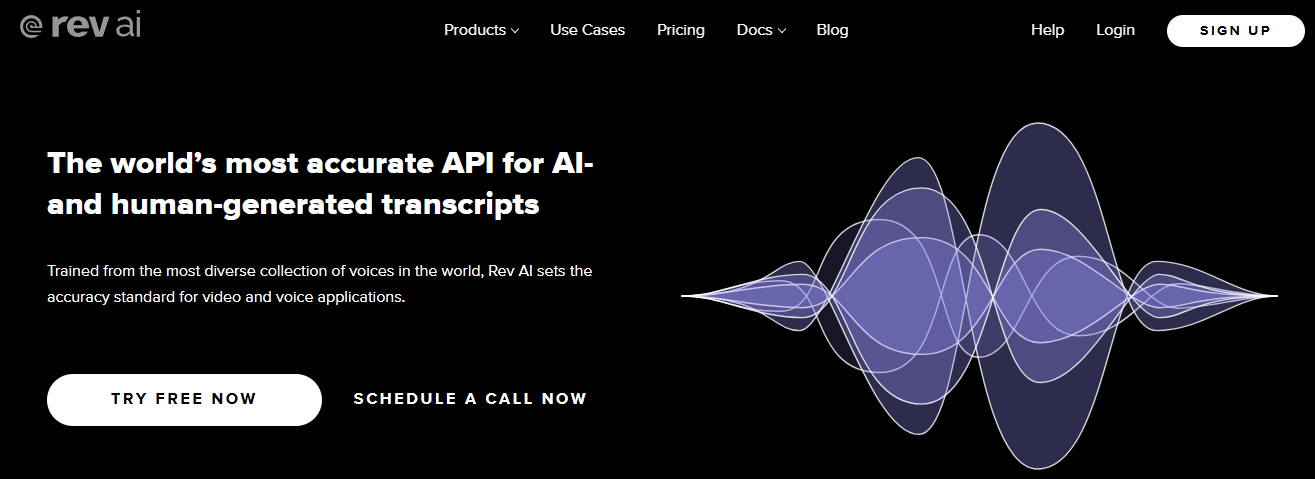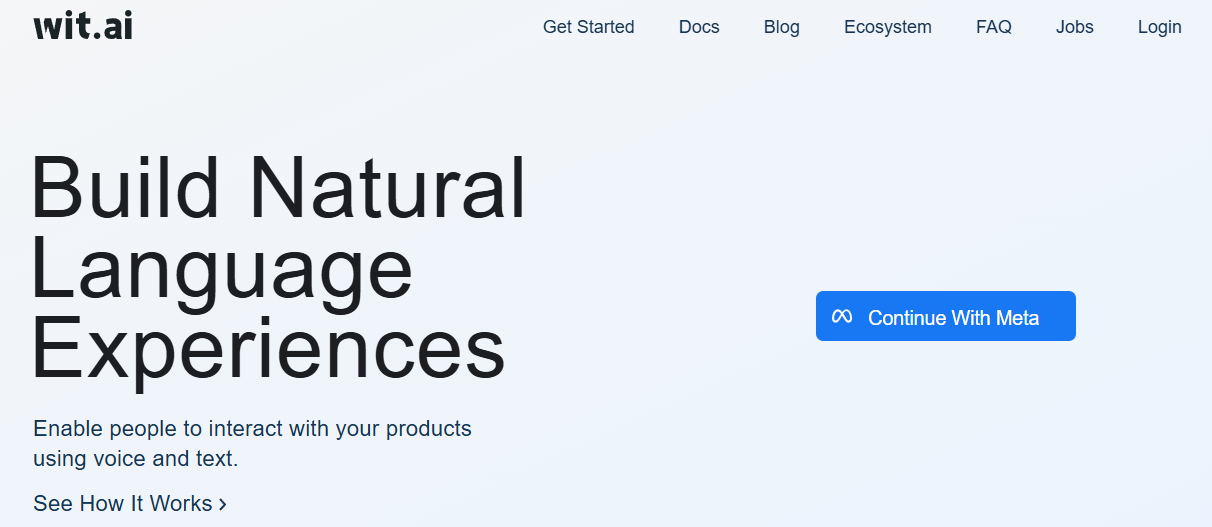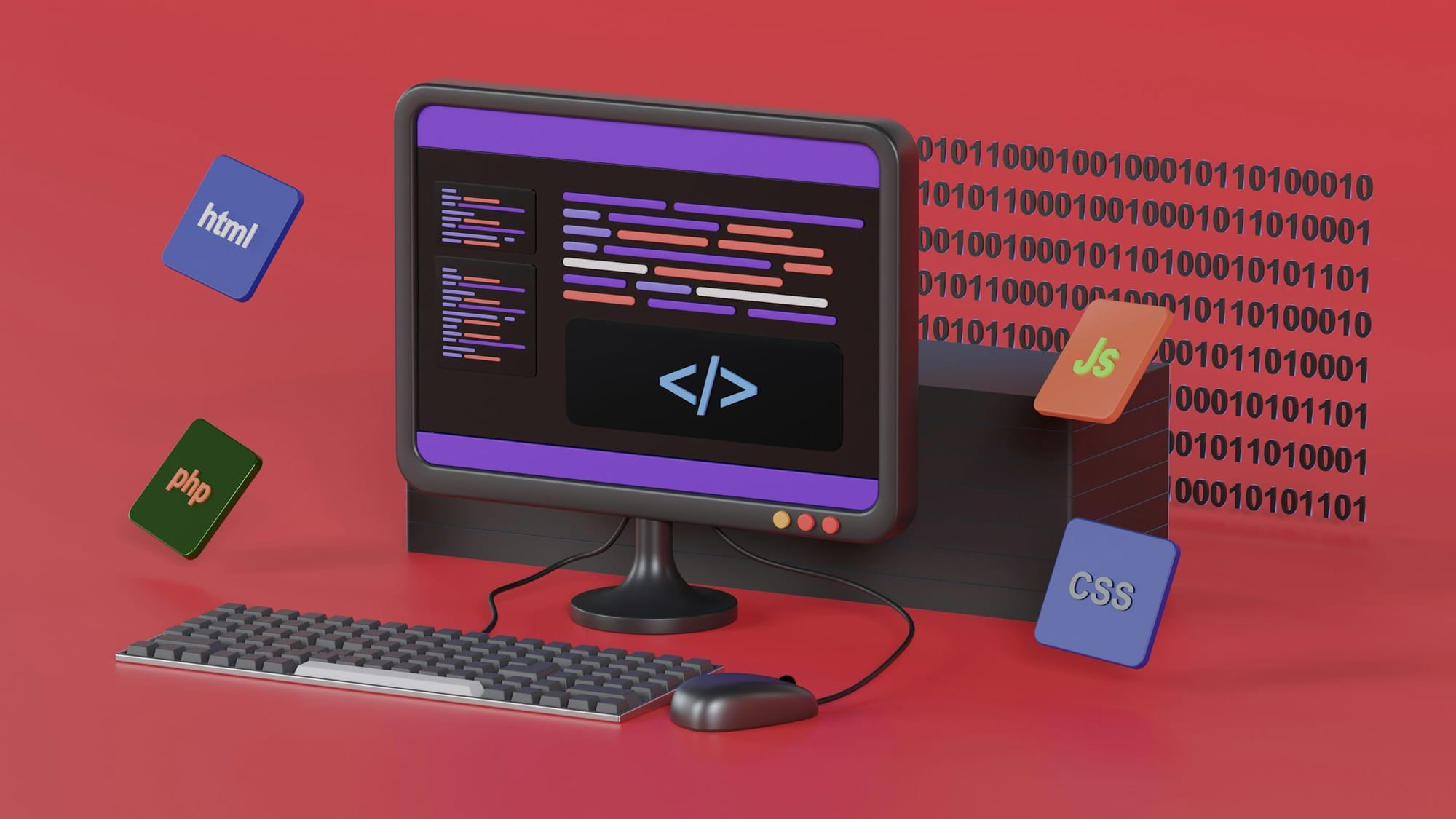What if you could boost your app's performance and deliver exceptional user experiences by integrating an AI API? AI API integration can take your application to the next level by allowing it to access the powerful features of existing AI models. This can make your app perform smarter and enhance functionality, helping you stand out in a crowded marketplace. In this article, we'll explore how to identify the best AI App development platform to help you build an innovative, next-gen application that meets your users' evolving needs.
One valuable tool for achieving your goals is Lamatic's generative AI tech stack. It simplifies the AI API integration process and makes it easy to build and enhance applications using the latest AI models.
What is an AI API?

An AI API, or artificial intelligence application programming interface, is a technology that allows developers to incorporate artificial intelligence features into applications. These APIs serve as bridges that connect AI functionalities with various applications, enabling them to perform complex tasks more efficiently, such as:
- Facial recognition
- Spam filtering
- Sentiment analysis
In simpler terms, AI APIs provide access to pre-trained machine learning models that can be integrated into existing systems to make applications more intelligent and more capable without the user’s need for extensive AI expertise.
What Are Some Examples of AI API Types?
Here are some of the prominent types of AI APIs:
AI Video Generation API
AI video generation APIs are powerful tools that automatically transform text into polished video content. Users feed inputs like text and images, and the API manages the entire video production process—from editing to final presentation. This technology is beneficial for businesses that need video production at scale.
For example, Tavus's API empowers developers to integrate ultra-realistic video generation from basic scripts into their platform. Their users can start by uploading a short training video and a script. Then, the API generates a new video that looks like they speak the script. This capability makes personalized marketing and customer engagement scalable without requiring expertise in video production.
Computer Vision APIs
Computer vision APIs enable machines to see and understand the world visually. These APIs process images and videos to identify objects, faces, and emotions, making them useful in:
- Security
- Retail
- Autonomous driving areas
They can automate tasks that rely on visual identification, such as:
- Scanning QR codes
- Recognizing product labels
- Monitoring traffic conditions
Natural Language Processing (NLP) APIs
Natural Language Processing (NLP) APIs allow machines to understand and interact with human language. They analyze text to extract meaning, respond to voice commands, and even detect sentiment, helping businesses improve communication and deliver more personalized user experiences.These APIs are used for developing applications like chatbots, language translators, and customer service tools that require understanding user queries and intelligible responses.
Predictive Analytics APIs
Predictive analytics APIs use historical data to forecast future events. By identifying patterns and predicting trends, they enable proactive:
- Decision-making
- Optimize processes
- Reduce risks
These APIs are widely used in finance for credit scoring, in marketing for customer segmentation, and in operations for inventory management.
Benefits of Using AI APIs
Utilizing AI APIs has many advantages, including streamlining operations, enhancing efficiency, and bringing innovation across various areas.
Saves Developers’ Time
AI APIs save significant development time by providing ready-to-use AI functionalities that can be easily integrated into existing systems. Developers don't need to build complex AI models from scratch. Instead, they can leverage pre-built models to quickly add features such as image recognition, language translation, or personalized recommendations. This allows developers to focus on:
- Other aspects of their projects
- Speeding up the development cycle
- Bringing products to market faster
Automation Opportunities
AI APIs open up many opportunities for automation, allowing businesses to streamline operations and reduce manual efforts. From automating customer inquiries through chatbots to processing invoices, AI APIs help automate routine tasks, freeing human resources for more strategic activities.
Scalability
These APIs allow businesses to handle increasing amounts of data and more complex processes as they grow. Whether it’s managing larger datasets for analytics or supporting more concurrent users on a platform, AI APIs help scale operations seamlessly. This scalability ensures businesses can expand their capabilities without compromising performance or user experience.
Dynamic Learning
AI APIs continuously learn and improve from new data, adapting their functions over time without human intervention. This aspect of dynamic learning ensures that the applications remain effective and efficient as patterns change and new data becomes available. For example, predictive analytics APIs enhance their accuracy over time by refining their forecasts based on the latest data trends. Similarly, personalized recommendation engines adjust their outputs to align with evolving user preferences, ensuring the recommendations stay relevant and engaging.
Related Reading
- Fine Tuning AI Models
- Artificial Intelligence in Web Applications
- How to Integrate AI Into an App
- How to Fine Tune GPT
- How to Use AI in an App
- How to Integrate ChatGPT Into an App
- How to Integrate AI Into Smart Home Application
The Evolution of AI in APIs and Their Role in App Development

AI APIs have come a long way since the first emergence of application programming interfaces decades ago. In recent years, the rise of AI APIs has revolutionized how developers integrate external services into applications, boosting productivity and changing the developer experience.
The Challenge of Manual API Integration
Traditionally, tasks such as API design, documentation, discovery, contract negotiation, and integration have been performed manually. Developers often navigate:
- Complex API specifications
- Construct HTTP requests
- Parse JSON or XML responses
This approach’s manual nature is fraught with potential issues, including inconsistent documentation, versioning problems, and syntax errors, making it increasingly inefficient and error-prone.
Overcoming Common Challenges in API Integration: Best Practices and Solutions
- Data Serialization: Manual conversions between data formats like JSON, XML, and protocol buffers.
- Rate Limiting: Manually handling API calls within the rate limits set by API providers.
- Error Handling: Dealing with various HTTP status codes and designing effective exception-handling mechanisms.
- API Versioning: Keeping up with updates and deprecated features requires constant attention and effort.
The Role of Online Resources in API Integration
In the past, developers often consulted community resources like GitHub repositories, Stack Overflow, and API-specific forums to gain insights into API utilization.
Although these platforms provide valuable code snippets and examples, they often lack the contextual specificity required for seamless integration into diverse development environments. This has usually led to a time-intensive cycle of trial and error for developers.
Navigating API Integration Challenges: Context, Security, and Scalability
Challenges
- Context: Existing code snippets may not account for specific language frameworks or library dependencies.
- Security: Community examples may neglect best practices in API security, like OAuth or API Key Management.
- Scalability: Code examples might not be optimized for scalability, affecting performance in large-scale applications.
API Integration Services
The complexity of manually integrating APIs has led some development teams to rely on API integration platforms, such as APIDNA. These platforms, equipped with pre-built connectors and integration patterns, have generally been able to expedite the integration process.
Even these specialized platforms have limitations in terms of flexibility and speed, sometimes causing project delays.
Balancing Flexibility, Performance, and Cost in Pre-Built API Connectors
Challenges
- Flexibility: Pre-built connectors may not cover all use cases or cater to unique business logic.
- Latency: The additional abstraction layer can introduce latency into API calls.
- Cost: Subscription or licensing fees can add to operational costs.
Enter AI: A New Era for APIs
The recent emergence of AI-powered tools like ChatGPT has dramatically boosted developer productivity. One of the key strengths of AI, such as GPT-3.5, is its ability to provide code snippets when given the correct input, including documentation and context scenarios.
Developers and API integration services can leverage AI to automate the generation of API integration code, reducing the time and effort required to integrate external services.
Context-Aware Snippets
Advanced NLP algorithms enable AI tools to understand the nuances of specific project requirements, thereby generating more relevant code.
Data Mapping
AI can automate the mapping between API responses and internal data structures, significantly reducing manual coding efforts.
Type Inference
Some AI models can predict the type of data that an API endpoint will return, allowing for the automatic generation of data models.
API Integration Security
While AI’s role in code generation is significant, security is another critical aspect of API integration. AI and machine learning algorithms have found their place in analyzing API traffic to identify sensitive data or detect malicious communication patterns that threaten systems.
Anomaly Detection
Machine learning models can be trained to identify abnormal patterns in API calls, helping detect DDOS attacks or data breaches early.
OAuth Token Analysis
AI algorithms can assess OAuth tokens’ lifetime and usage patterns to recommend security best practices.
Automated Firewall Settings
Adaptive algorithms can adjust firewall rules dynamically based on the identified threat vectors.
API Testing
Existing testing services often rely on user-written tests, which can limit automation capabilities. AI has the potential to free human testers from several manual tasks, including:
- Test case generation
- Documentation analysis
- Parameter value inference
- The creation of realistic test cases based on actual API calls
Dynamic Test Case Generation
AI algorithms can analyze API documentation to generate test cases, ensuring complete coverage.
Parameter Value Inference
AI can predict likely parameter values for test cases based on historical data and usage patterns.
Realistic Load Testing
Machine learning models can simulate real-world API call patterns, providing a more accurate measure of system performance under load.
Autonomous Applications
One of the transformative concepts in distributed systems is the rise of autonomous applications. These applications are designed to interact with other systems without requiring human intervention.
The level of autonomy can range from following predetermined integration pathways to dynamically choosing APIs to integrate with based on real-time conditions. This enables applications to adapt to changing scenarios much faster.
Decision Trees and State Machines
Algorithms like decision trees or finite state machines can be used to navigate through predetermined integration pathways.
Real-Time Data Analysis
Machine learning models that perform real-time analytics can dynamically choose which APIs to integrate based on current conditions, such as:
- Load
- Latency
- API health
Feedback Loops
Some advanced autonomous applications use reinforcement learning to optimize decision-making based on previous experiences.
Autonomous Business Integrations
Taking the concept of autonomous applications further, we encounter autonomous business integrations (ABI). ABIs not only handle API discovery and connection autonomously but also possess the capability to engage in automated contract negotiation and execution.
This level of automation introduces a new layer of complexity and opportunity in digital business operations, where software agents can assess, negotiate, and fulfill contracts without human oversight.
Smart Contracts
ABIs can use blockchain-based smart contracts to ensure trust and security in business engagements.
Natural Language Processing (NLP)
Machine learning models specializing in NLP can interpret and negotiate contract terms automatically.
Data-Driven Decision-Making
Advanced analytics algorithms assess business metrics like cost, time, and reliability before entering a contract.
The Future of AI API Integration
The ultimate goal of AI-enabled API integration is the development of interface-free AI systems. Unlike traditional applications, these systems can interpret user requirements dynamically and identify relevant APIs to execute tasks autonomously.
This move toward context-sensitive, intelligent applications is considered the next significant step in software development.
Contextual Analysis
Advanced NLP and sentiment analysis can be used to interpret user requirements from natural language inputs.
API Discovery Algorithms
Machine learning models can scour a database of APIs to find the one most suitable for the interpreted user requirements.
Dynamic Adaptation
Utilizing technologies like neural networks, these systems can adapt over time, improving their accuracy and efficiency in task execution.
Related Reading
- List of Generative AI Tools
- Create Your Own AI Application
- Generative AI Applications
- How to Build AI Software
- ChatGPT Integration Services
- Custom ChatGPT Integration Services
- AI Integration Services
- Best Generative AI API
- AI Integration Strategies
- AI Integration Tools
- Best AI APIs
- Benefits of APIs
15 AI API Integration Platforms for Next-Gen Apps
1. Lamatic

Lamatic offers a managed Generative AI Tech Stack. Our solution provides:
- Managed GenAI Middleware
- Custom GenAI API (GraphQL)
- Low Code Agent Builder
- Automated GenAI Workflow (CI/CD)
- GenOps (DevOps for GenAI)
- Edge deployment via Cloudflare workers
- Integrated Vector Database (Weaviate)
Lamatic empowers teams to rapidly implement GenAI solutions without accruing tech debt. Our platform automates workflows and ensures production-grade deployment on edge, enabling fast, efficient GenAI integration for products needing swift AI capabilities. Start building GenAI apps for free today with our managed generative AI tech stack.
2. Tavus API

Tavus API, powered by the Phoenix model, is a top API that significantly simplifies video production. It embeds advanced text-to-speech capabilities directly into applications. Developers can white-label Tavus’ technology to allow users to create personalized video content directly from scripts without the need to build complex video systems themselves.
This API generates hyper-realistic videos featuring digital replicas of the user, effortlessly turning text into engaging video content. This seamless integration lets developers focus on their core product while offering engaging, hyper-realistic videos as part of their app’s experience. Tavus offers AI-powered lip-syncing and voice-dubbing for ultra-realism when converting into over 30 languages.
3. Imagga API

The Imagga API offers image understanding and analysis technologies designed to automate handling of extensive image collections. It’s designed for businesses that manage extensive visual data. The API analyzes images to understand their content and provides various insights. It offers customization options, allowing companies to tailor the API to their needs and integrate it into existing applications.
4. Vision AI

Vision AI uses the Cloud Vision API to enable applications to analyze images and videos intelligently. It automates the extraction and classification of information from visual content. Vision AI can be used for optical character recognition (OCR), object detection, and facial recognition.
5. IBM Watson Speech to Text

IBM Watson Speech-to-Text is an AI-powered service that accurately transcends audio-to-text in multiple languages. This service is designed for customer self-service, agent assistance, and more.
It offers out-of-the-box functionality with advanced machine-learning models or customization options for specific use cases. The service can be used for call centers, media companies, and legal firms and supports integration into existing applications.
6. Google Cloud's Speech-to-text API

Google Cloud's Speech-to-Text API is a tool that leverages neural network models to convert audio to text accurately. It supports various languages and can transcribe audio from real-time streams and pre-recorded files. This can be used for applications in:
- Customer service
- Media production
- Accessibility solutions
7. Stream

Stream's Auto-Moderation API is an AI-driven tool designed to enhance trust and safety across digital platforms by identifying, monitoring, and resolving harmful content. This API uses advanced machine learning models and configurable policies to adapt to your community’s specific context and expectations. It can be used for any user-generated content environment that requires real-time moderation to maintain a safe and inclusive space.
8. DeepAI API

DeepAI API supports a variety of creative and analytical tasks, particularly in image and text processing. It can generate images from text descriptions, enhance image resolution, and perform image manipulations like colorization and noise reduction.
This API can be used for developers, content creators, and marketers who require visual content.
9. Pixray API
The Pixray API is a Replicate tool for generating images from text descriptions. It’s designed for artists, designers, and developers who require quick and customizable image generation. This API utilizes techniques such as Perception Engines and CLIP-guided GAN imagery to produce detailed images that align with the prompts.
10. Microsoft Azure Cognitive Services API

Microsoft’s Azure Cognitive Services is a collection of APIs that enables text conversion, language understanding, and more into applications. It's designed to augment user experiences across various applications, from emotion and sentiment detection to speech and vision capabilities. This is meant to be applied to multiple industries with minimal coding effort.
11. Amazon AI API

Amazon AI API, part of AWS (Amazon Web Services), provides a suite of machine learning services and tools that facilitate the integration of AI capabilities into various applications.
These APIs enhance applications with advanced features such as natural language understanding, speech recognition, and image analysis. Amazon AI APIs are used across various industries, including:
- Healthcare
- Finance
- Media
- Customer service
12. Clarifai API

The Clarifai API enables developers to implement image and video recognition capabilities into their existing applications. This API utilizes machine learning models to classify, detect, and segment images and videos in real-time. It can be used for:
- Content moderation
- Security surveillance
- Personalized customer experiences
13. OpenAI API

The OpenAI API offers access to various AI models designed to handle tasks that involve understanding and generating human language. This API is capable of a wide range of functions, from translating languages to generating human-like text and even creating content such as:
- Articles
- Poems
- Code
It can be used by developers looking to incorporate AI technology into products that require natural language processing, machine learning, and task automation.
14. Rev.ai API

Rev.ai is another AI company that believes in developing expertise and doing a few things well. They’ve decided to do only one thing well—yes, just one! Speech-to-text conversion. Yup, that’s all they offer! There’s not even text-to-speech, let alone other categories of AI/ML.
15. Wit.ai

Wit.ai is an AI platform that has advanced capabilities in speech processing as well as text processing. Yes, that sounds like every other NLP and text-analysis/transcription service out there, but there’s more:
- Wit.ai is open source, so nothing stops you from learning from their tech or hosting the platform on your infrastructure.
- Wit.ai isn’t just a code dump lying on GitHub—it’s an actual, running API service (in the form of HTTP APIs) open for anyone to use.
- The API service is free. Yes, free! It’s so free that no pricing plans exist. Wit.ai is meant to be extensible. Its core purpose is more or less to help you (push you?) into creating, training, testing, and using ML models.
Start Building GenAI Apps for Free Today with Our Managed Generative AI Tech Stack
Lamatic offers a managed Generative AI Tech Stack. Our solution provides:
- Managed GenAI Middleware
- Custom GenAI API (GraphQL)
- Low Code Agent Builder
- Automated GenAI Workflow (CI/CD)
- GenOps (DevOps for GenAI)
- Edge deployment via Cloudflare workers
- Integrated Vector Database (Weaviate)
Lamatic empowers teams to rapidly implement GenAI solutions without accruing tech debt. Our platform automates workflows and ensures production-grade deployment on edge, enabling fast, efficient GenAI integration for products needing swift AI capabilities. Start building GenAI apps for free today with our managed generative AI tech stack.





